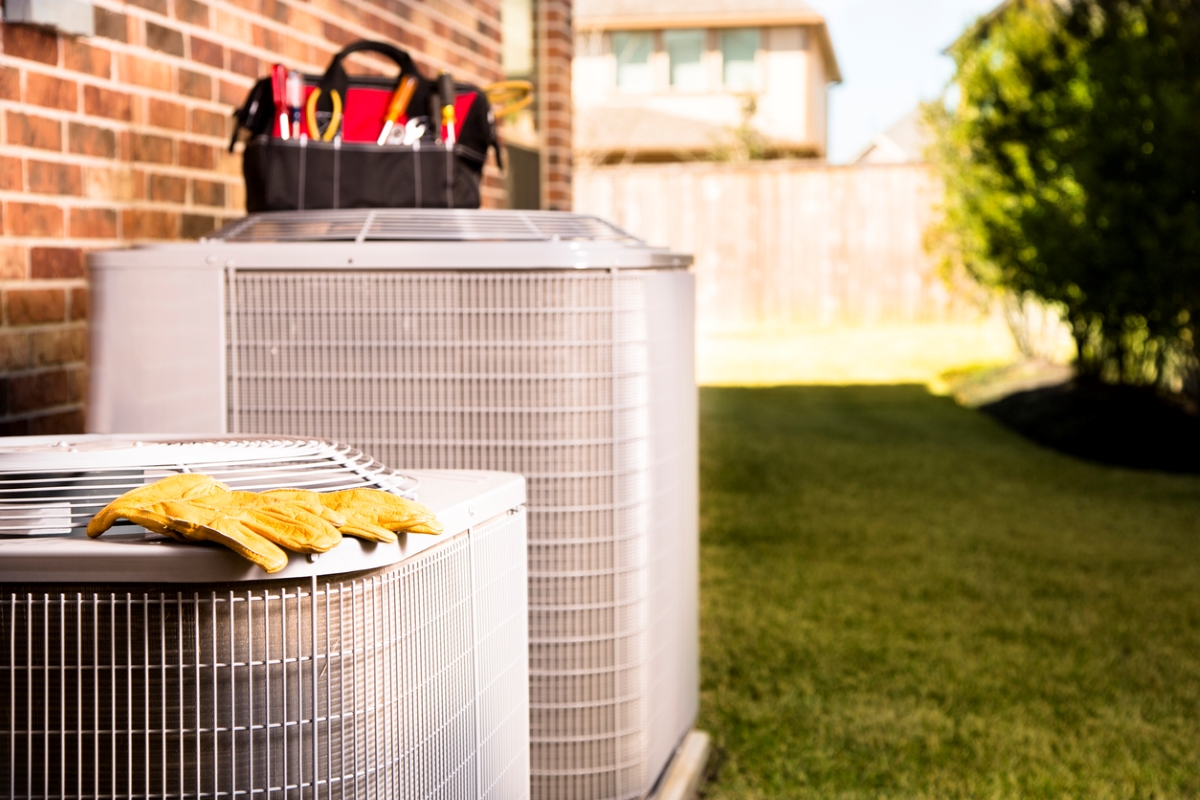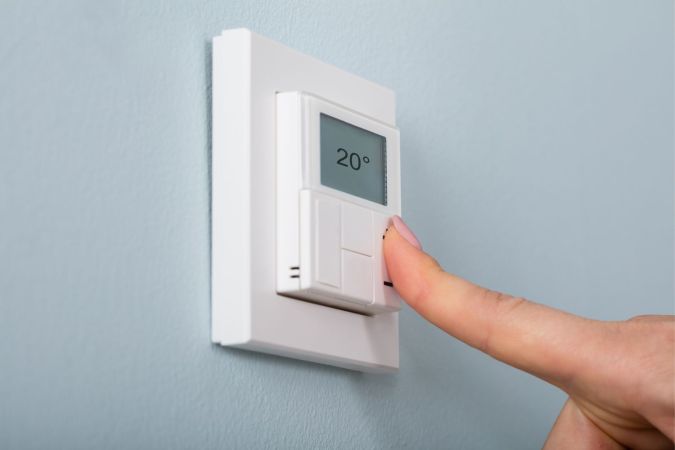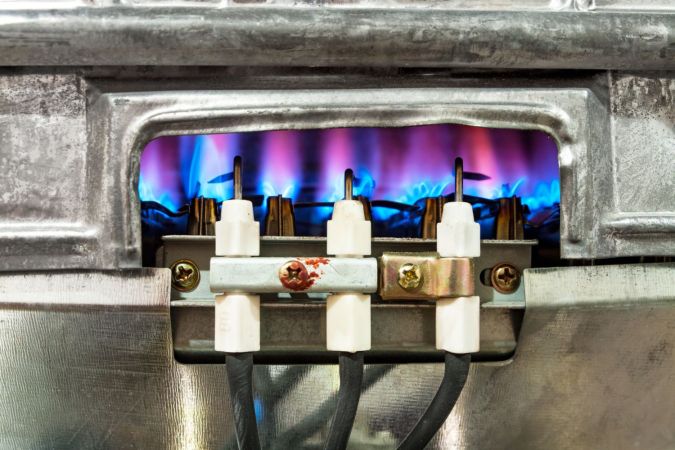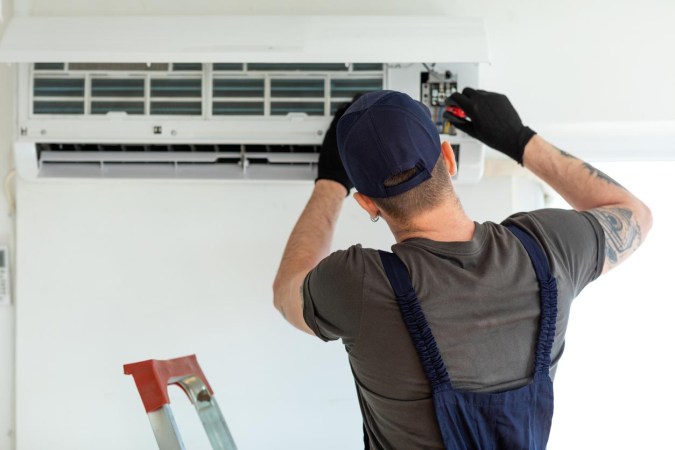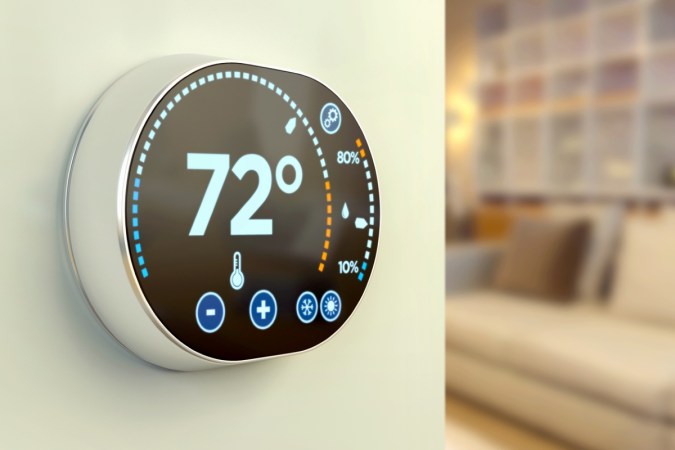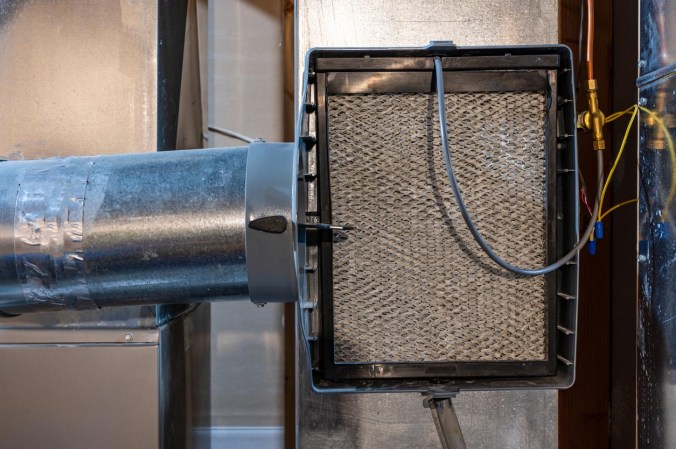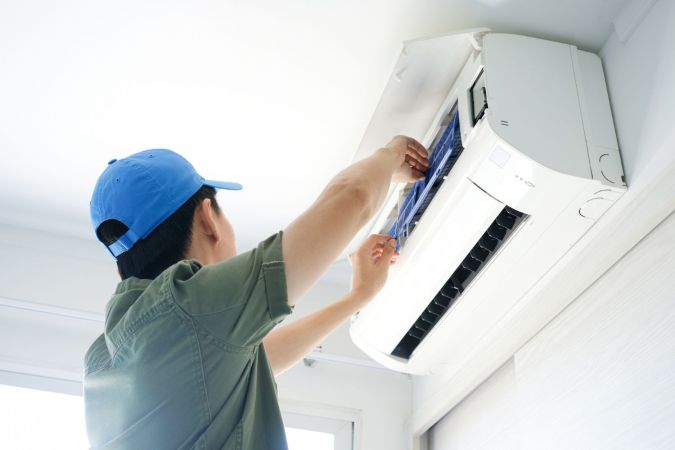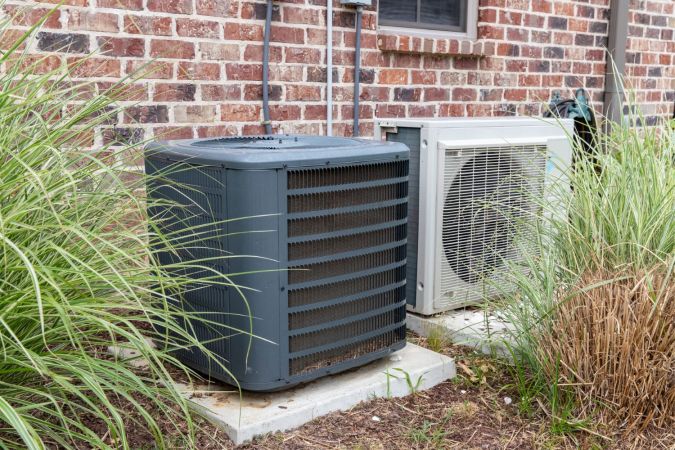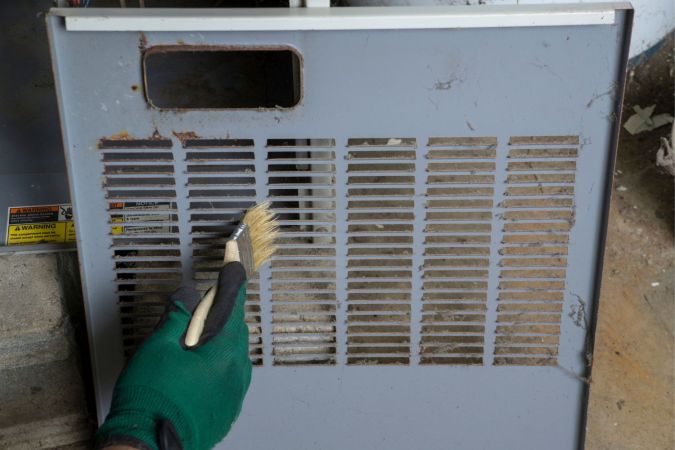We may earn revenue from the products available on this page and participate in affiliate programs. Learn More ›
New tax credits for energy-efficient heat pumps, affordable smart thermostats, and a demand for filters that can fight viruses are among the top trends for HVAC installation in 2023. These new technologies and tax credits can save you money on utility bills while helping foot the bill for a more energy-efficient HVAC system. Ahead, learn more about how these tax breaks and new technologies can protect you from viruses and help improve the energy efficiency of your home’s HVAC system.
RELATED: Need a New AC? 5 Top Factors for Sizing Up Your Needs
Smart Thermostats
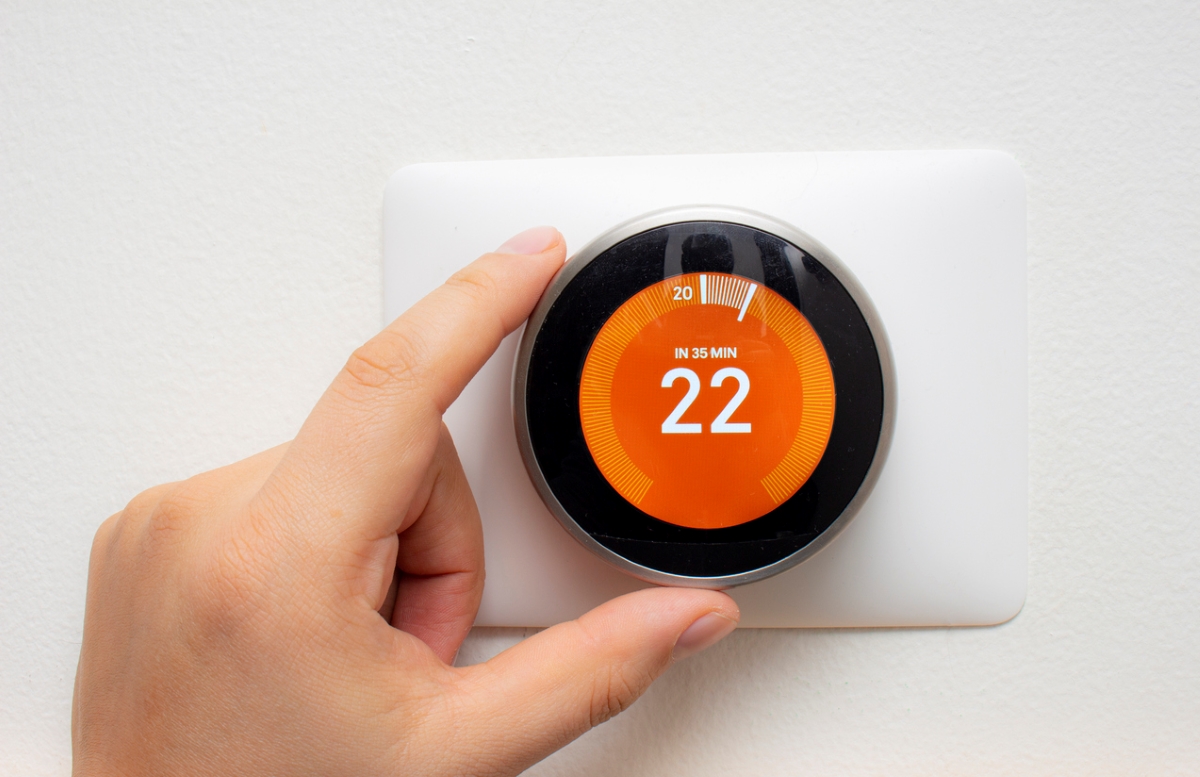
With energy costs rising with inflation, more and more people are turning to smart thermostats to help save money on their utility bills. These devices connect to a home’s Wi-Fi network, allowing users to create heating and cooling schedules from a smartphone, so the HVAC system uses less energy when no one is around. In fact, an Energy Star-certified smart thermostat can save about 8 percent on cooling costs. What’s more, this energy-saving technology has come down in cost with smart thermostats available for as little as $60.
RELATED: 6 Things to Know Before Switching to a Smart Thermostat
New Efficiency Standards Will Cause the Cost of AC Units to Spike
If you’re planning on investing in a new air conditioner in 2023, then know that you’ll be paying a lot more for it. New government regulations that come into effect the first of the year push the minimum Seasonal Energy Efficiency Ratio (SEER) rating, a measure of an AC unit’s efficiency, up from 13 to 14 for homes in the northern half of the country and from 14 to 15 for homes in the southern half. Supply chain issues are making it hard for manufacturers to produce new units that meet these standards, which analysts say could drive the cost of AC units up by as much as 30 percent.
Heat Pumps Stay Red Hot
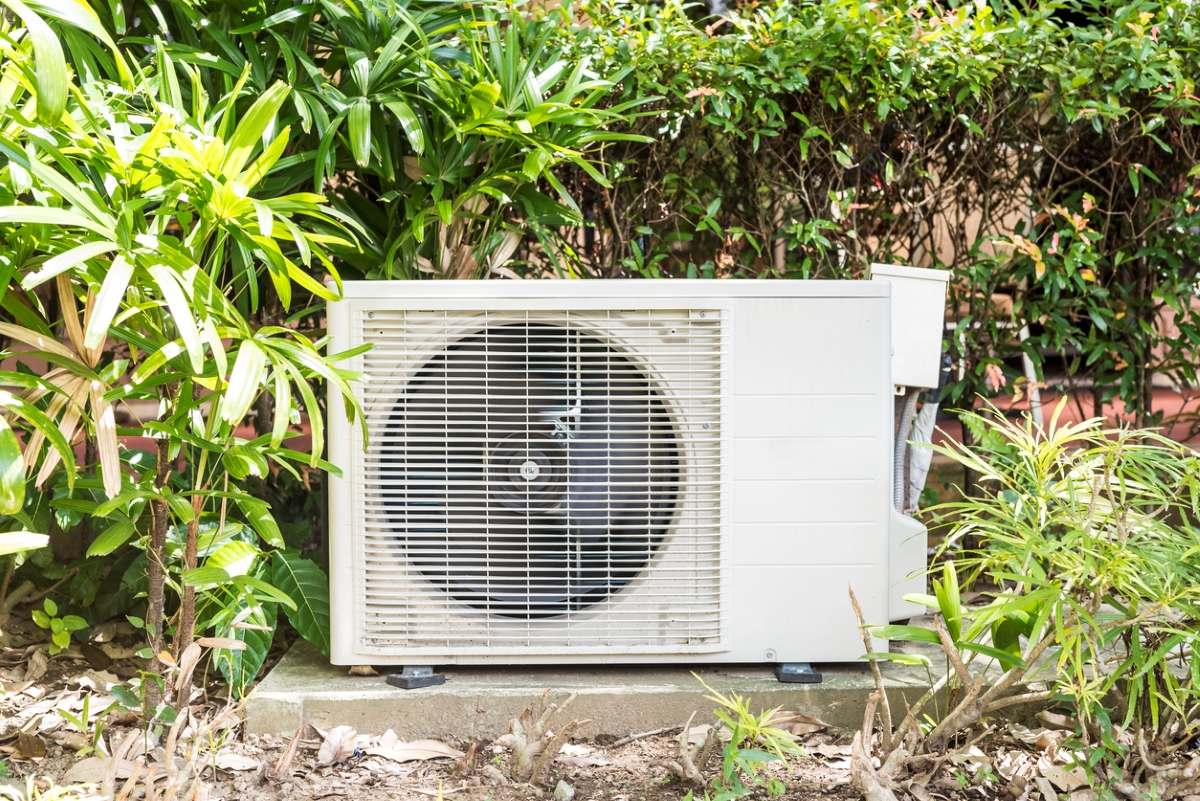
The past couple of years have seen a dramatic increase in popularity in heat pumps and that trend likely won’t cool off anytime soon. Unlike gas furnaces, heat pumps run off electricity, which can come from renewable sources such as wind and solar. In fact, an air-source heat pump can cut energy use by 50 percent, according to the U.S. Department of Energy. And, with heat pumps included in the Inflation Reduction Act that President Joe Biden signed into law last summer, homeowners can get a federal tax credit of up to $2,000 for the purchase and installation of a new heat pump.
RELATED: Save on Monthly Utility Costs with a Hybrid HVAC System
Covid-19 Drives Demand for Air Scrubbers
Covid-19 has affected virtually every aspect of our lives, and HVAC is no exception. The global pandemic has created a demand for HVAC systems that can scrub contaminants and viruses from the air, helping to prevent the spread of some diseases. In many cases, turning an HVAC system into an air scrubber only requires equipping it with antimicrobial air filters that can eliminate viruses and bacteria as they circulate air through a home.
RELATED: 8 Things Homeowners Should Know About HEPA Filters
Digital Zoning
Another technology that’s emerging to make HVAC systems more efficient is digital zoning. This technology uses a series of dampers inside an HVAC’s system ductwork to regulate and redirect the flow of air. When combined with sensors, digital zoning automatically adjusts the dampers to direct heat or cold air away from unoccupied rooms to occupied spaces in the home, helping to save energy.
RELATED: How To: Upgrade Your HVAC—Without Giving Up Your Ducts
Mini-Split Air Conditioners
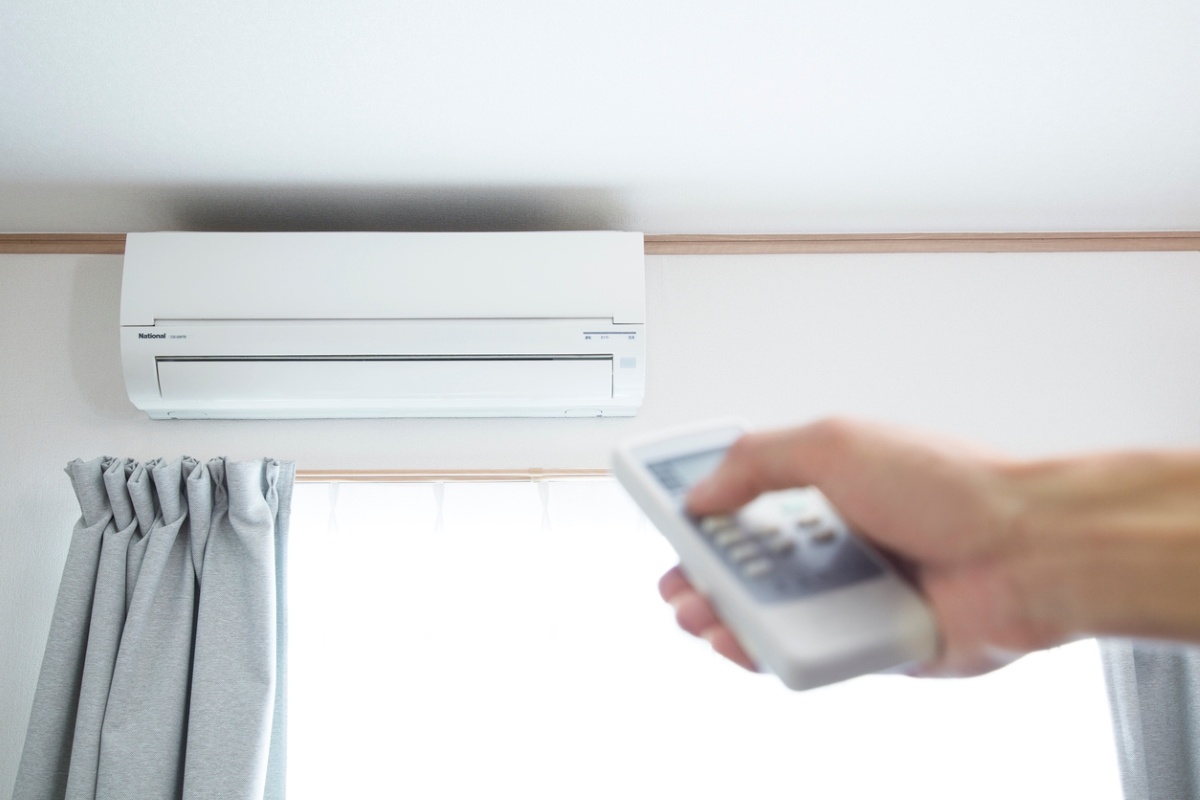
As with other trends in HVAC technology, energy efficiency is what’s preventing the mini-split air-conditioning market from cooling off. This type of air conditioner consists of an outdoor compressor that connects with an air handler that mounts to the wall inside the room. They’re much more efficient than central air-conditioning systems, since they don’t lose 25 percent of their energy to ductwork. Plus, mini-split units use inverter-driven technology that regulates the speed of the compressor rather than cutting it off and on, saving more energy.

